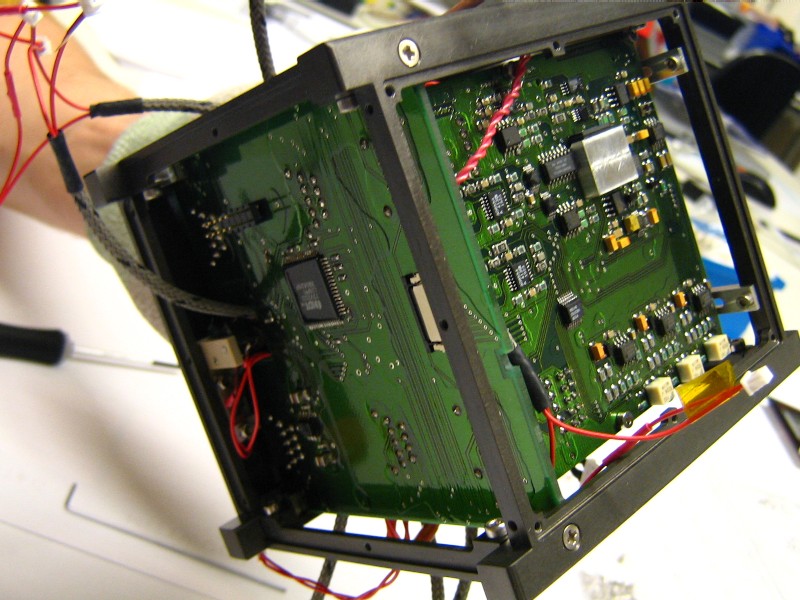|
|
||
HOME
|
Mission Objectives Being the second German CubeSat ever sent to space, the mission objectives mainly focused on the evaluation of CubeSat technologies in space. Almost the entire satellite had been designed from scratch using a mix of custom-made components (including software) and commonly available electronics. Therefore the design had no space heritage (except for the solar cells) and therefore there was a high risk of mission failure. The mission objectives were defined in the first phase of the project as follows:
Due to the high risks associated with the mission the success levels were defined more conservatively and are stated as
Spacecraft Design The COMPASS-1 satellite adheres to the CubeSat specification and has overall dimensions of 100mm x 100mm x 113.5mm at a total weight of about 850 grams. Each of the side panels (except for the front side) is equipped with two high-efficient Gallium-Arsenide Triple-Junction space solar cells that, combined with two Lithium-Polymer accumulators for energy storage, provide a nominal power of 1 Watt to the satellite system. The thermal system is mostly passive, with the exception of two heater foils that are placed between the batteries. For the communication two frequencies in the amateur radio band are used. The command uplink in DTMF format is on the 2m band whereas the data downlink is in the 70cm band. Downlink is selectable to be 1200 baud AFSK modulation or 2400/4800 baud MSK modulation. Data is encapsulated in Ax.25 packets. An 8051 microcontroller does the command and data handling and saves data and images in a non-volatile memory. Another microcontroller is dedicated to the attitude determination and control tasks, and interfaces to a three-axis magnetometer, five MOEMS sun sensors developed at MIC/DTU, as well as to three self-made mutually orthogonal installed magnetic coils. Software is written entirely in 'C' language for microcontroller.
Testing In order to ensure the survivability of the spacecraft in the harsh environment of space a number of tests were conducted on component and system level. The tests simulated certain critical aspects of the mission life cycle, such as the vibrations that appear during launch, as well as the vacuum of space and the extreme temperatures that the satellite is subjected to. After passing all of the tests, the satellite was 'certified' for its travel into space.
Teamwork The COMPASS-1 satellite is the result of enormous effort from many (more than 25) students of Aachen University of Applied Sciences (FH Aachen), the support from advisors and employees of FH Aachen, as well as the help from the Aachen radio-amateur community. Only due to the hard work and dedication of all involved the project could become such a success.
|
|
|
|
||



